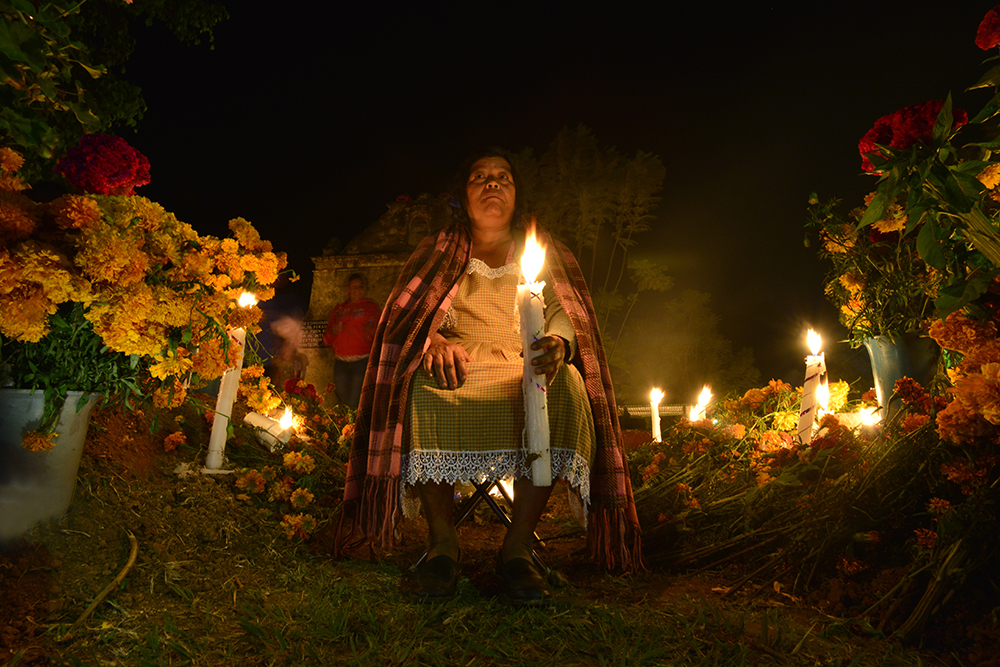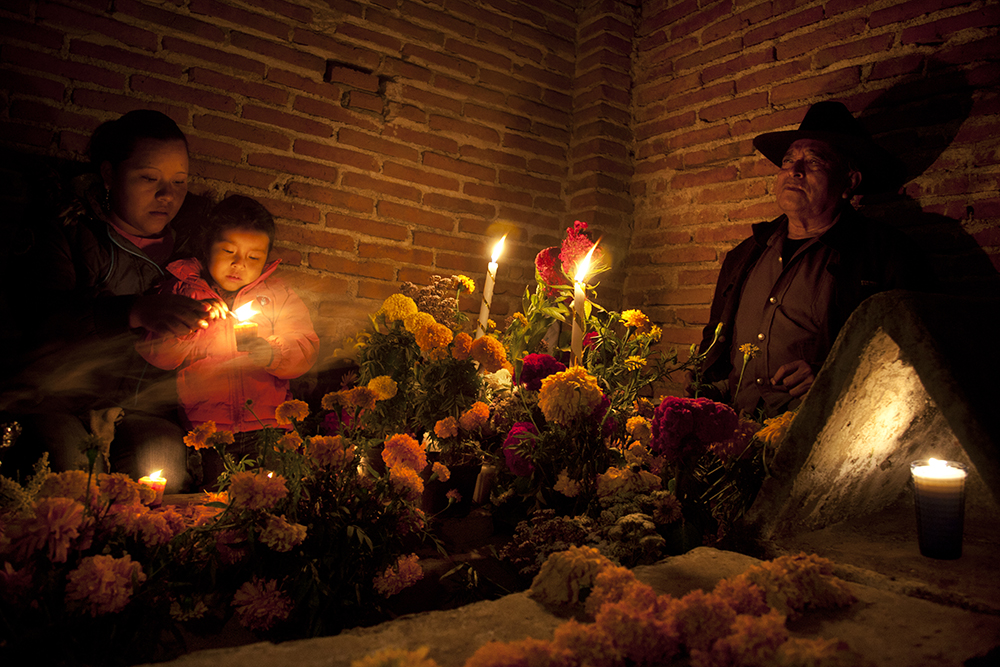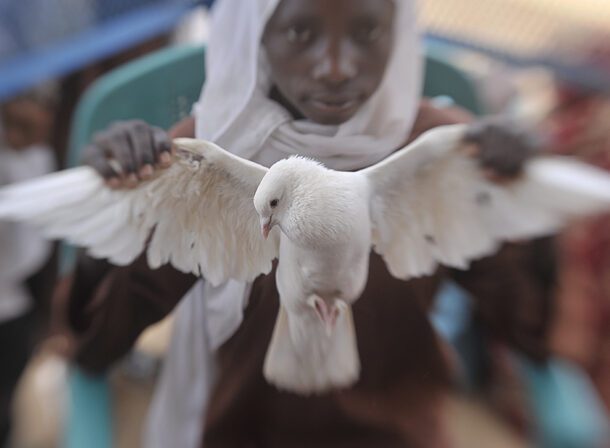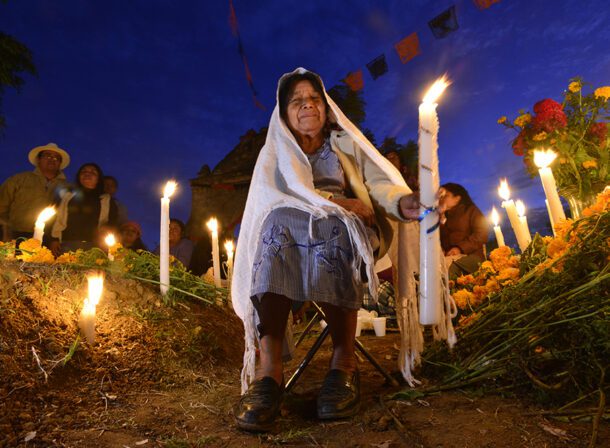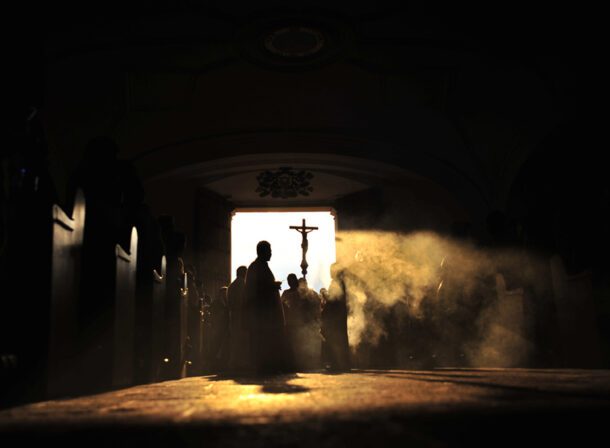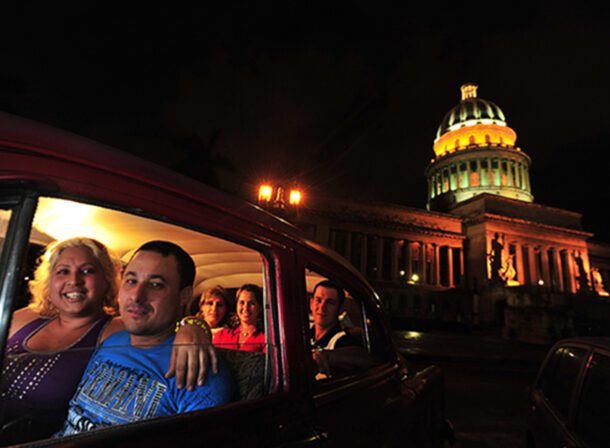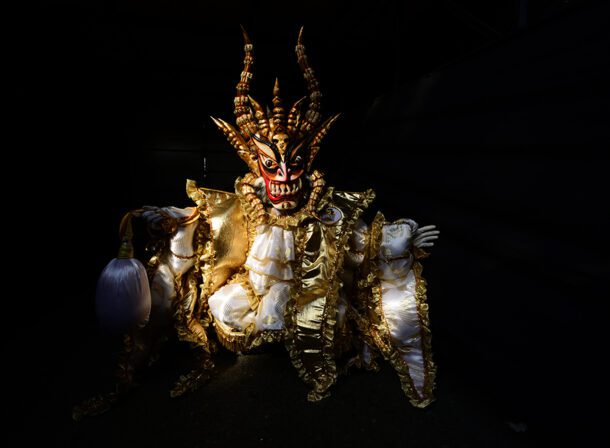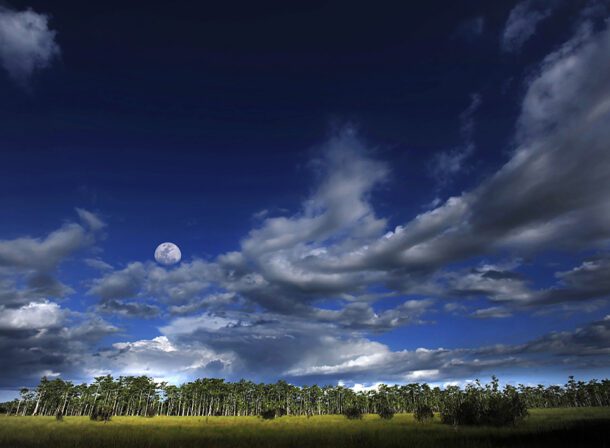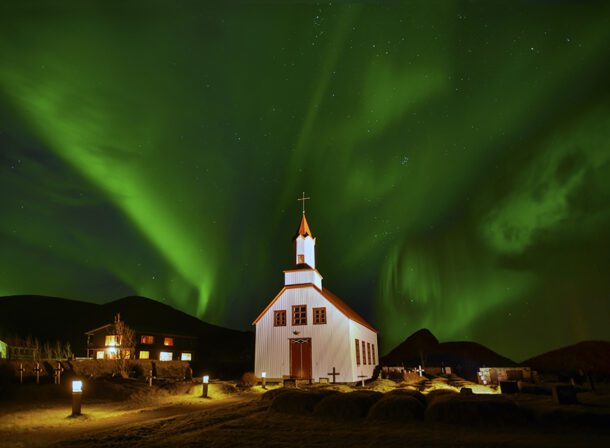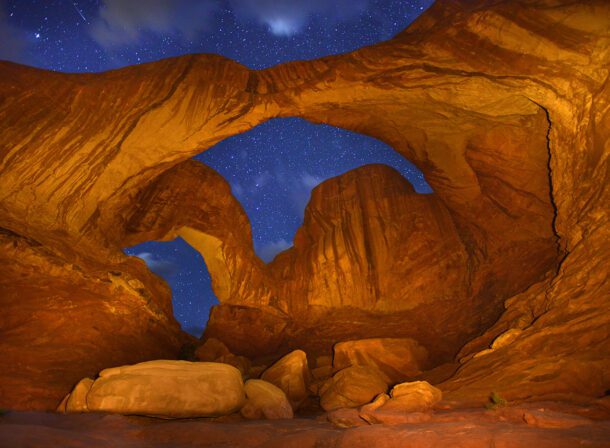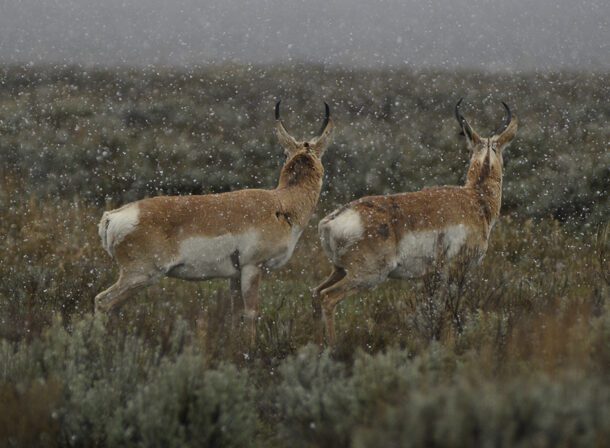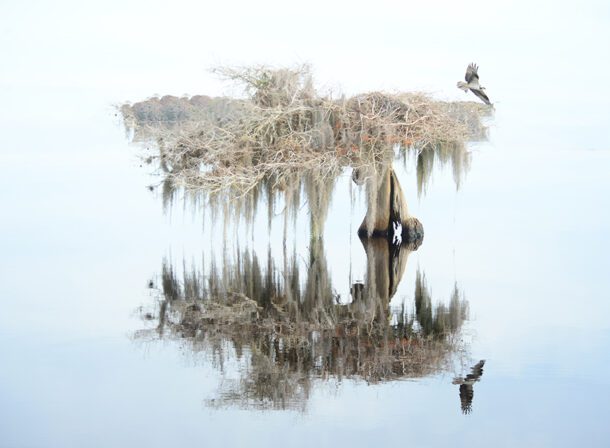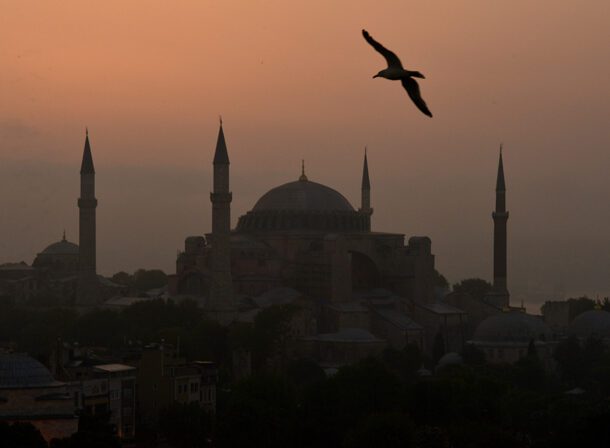
THE SPIRIT OF DAY OF THE DEAD, OAXACA

Day of the Dead is a profound and wonderful celebration of life; it is a time of honoring and welcoming the deceased. The graveyards become playgrounds for the dead, as marigolds and the sweet smell of copal welcome them back.
I have always said that this feast is about family, intimacy and tradition, and the only way to shoot images that will convey this is to actively participate in the celebration. On the night of the 31st, while shooting in the Xoxocotlan cemetery, I met Celia, I had photographed her a year ago, under the rain at her father’s tomb. However, given the weather conditions I was not able to previously meet her. The next year I looked for her to give her a print. As we engaged in a conversation, she told me all about every one of her family members buried in the graveyard.
Some years ago, in this same cemetery, I met Juan; he was sitting in a far corner of the lot right next to his father’s grave. His granddaughter Martita and daughter-in-law were there too. His father died in 1964 and since then, he has started to pay visits. As he offered me Mezcal, he told me, “I don’t drink anymore but I always bring some for friends who visit.” That moment was forever preserved in one of my most iconic images of this celebration. To this day, I make a point of stopping by to converse with him for a little bit. For me, this is way more important than any image I might shoot.
At Mitla, visiting Gildardo on the morning of the 31st, has become a tradition. Our time is spent savoring his Mezcal while photographing the family members at the home’s altar. It was in this very altar that I photographed his mother, the last image of her before the year she passed. The girls have grown, Romina is now 12 and Rodrigo now weaves like his father.
The dawn of the 1st, I spend at Atzompa where for the past 7 years I have photographed Maria and the Lavida family. Every year we have a date and family members will visit, the conversation always revolves around last year’s events and how much we have missed each other. By now I have documented three generations of this amazing family. Dawn at Atzompa is a “party” of epic proportions; it is surreal to hear the loud “banda” music filling the air, while people dance the night away. As with every other event surrounding Day of the Dead, Mezcal is the order of business and large amounts of it flow as the spirits descend.
In Teotitlan de Valle, Ermelinda, head of one of the oldest weaving families has improved her Spanish and insists we eat all the tamales she has cooked for us. Sofi, my dear Sofia, master candle maker. I haven’t seen her in three years. Her father passed less than a year ago and she made the most beautiful altar I have ever seen. She asked me to photograph her and her daughter.
In the town’s graveyard, I sat down with a family of over twenty members, too many to remember their names, but their faces will always be in my heart. There will most certainly be a place reserved for me at next year’s vigil. In Etla and Oaxaca City, the comparsas run all night, a plethora of spooky characters dance all over the streets.
Day of the Dead is part of my life, and many other images will arise from me experiencing one of Mexico’s most time-honored holidays.





